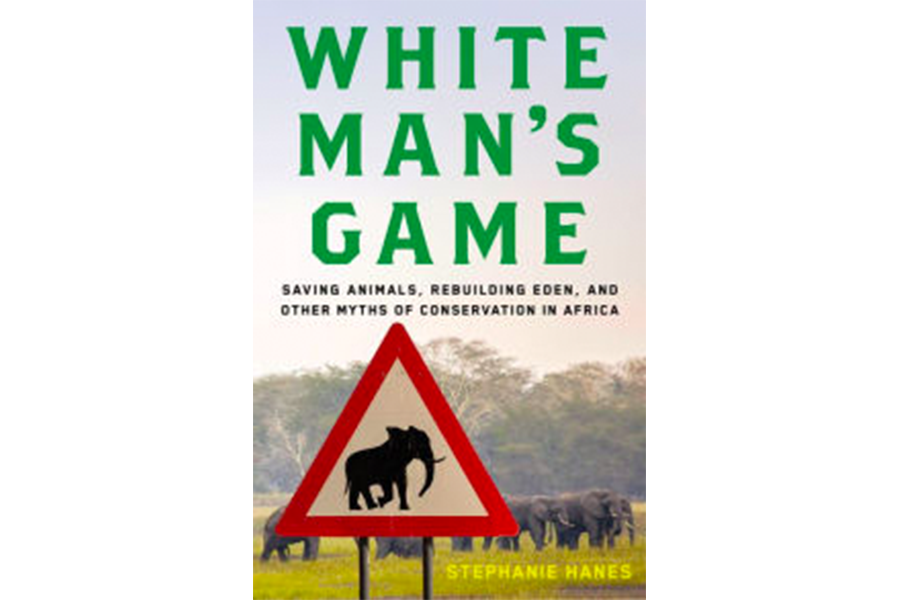'White Man's Game' details efforts to save Mozambique's Gorongosa Park
Loading...
At the beginning of the 1970s, spending time in Mozambique's Gorongosa National Park was an almost surreally beautiful experience. The park and its sprawling “buffer” zone lay in the great shadow of Mount Gorongosa, with a large and complicated ecosystem fed by a complex of rivers making their way from the mountain to the Pungwe River and down to the Indian Ocean. The landscapes were as variable as the weather – lush grasslands, dense rain forest, open scrub, and all of it thickly populated with wildlife: herds of elephants, great roving packs of wild hunting dogs and prides of lions, dozens of different species of antelope, and a glorious riot of birds, many of which made their home nowhere else on the continent.
Then disaster struck. Mozambique's struggle against its Portuguese colonial masters spilled into a ruinous civil war that lasted for 20 years and engulfed the park. Soldiers shot lions for sport, killed wild dogs as vermin, and hunted antelopes and buffalo for food. Aerial bombardments made wastelands out of what had once been thriving river-fed habitats, devastating elephant herds. By the time the war ended, Gorongosa was a tattered wreckage.
Ever since, extensive conservation efforts have been underway to restore the park and its environs to something like its earlier glories. Those efforts are at the heart of White Man's Game, the new book by Christian Science Monitor correspondent Stephanie Hanes, who first visited Gorongosa in 2006 and quickly fell under its spell, but with reservations: “The land was both breathtakingly beautiful and deeply troubled, and I had the strong sense of something just out of reach, rumbling barely beneath the surface."
Those subterranean rumblings are reflected in her book's subtitle, “Saving Animals, Rebuilding Eden, and Other Myths of Conservation in Africa,” where the word “myths” stands out like a fire alarm at a happy wedding.
Hanes rightly takes a dim view of the “frankly … appalling track record of well-meaning Americans and Europeans creating unintended consequences around the world.” She expertly surveys some of the long history of “do-gooder” humanitarian interventions in Africa, from the days of Theodore Roosevelt to stories of Bono and LiveAid concerts, and she draws a tight web of connections between such condescending efforts and the modern multi-pronged struggle to revamp Mozambique's economy and maximize its tourism industry.
A revived Gorongosa National Park is naturally the epicenter of such a struggle, and in "White Man's Game," that epicenter is largely occupied by one man: Boston philanthropist Greg Carr, who likewise fell in love with Gorongosa and launched a campaign to bring its wildlife back.
In Hanes's book, we first meet Carr as he's restlessly reading Euripides back in Massachusetts: Greg “would sit late into the night in his bookcase-lined library,” Hanes writes, “and read about the thin line between greatness and hubris, love and rage; about characters who were passion-driven in their tumultuous quests to follow a path of righteousness only to realize later that they were pursuing the wrong god.”
Hanes is no doubt wise to be skeptical of Western-gesture conservation in Africa, but implicitly likening Carr to a Euripidean tragic madman is laying it on a bit thick, especially considering the fact that his main crime seems to be caring about Mozambique's natural world while also being white. The same is likewise true of Hanes's take on “Big Green,” the large conservation organizations like World Wildlife Fund or the Nature Conservancy, which she seems to view as well-funded shills for government and oil concerns. “It's possible to make the argument that if Big Green didn't exist, the global environmental situation would be even worse,” she writes. “Still, it's hard to avoid the impression that, in many ways, the conservation industry mirrors the humanitarian assistance industry, with alarmist pledge drives, heart-stirring photos, and admonitions to 'act now!' – all to be repeated for the next grant cycle.”
In a world where nature is under assault on all sides, this kind of take is ruinously, dangerously cynical. In fact, it's not only “possible” to argue that “Big Green” has done vital work to hold back those assaults, it's impossible to argue otherwise. If not for the money and lobbying clout of these organizations (and, for all their flaws, people like Carr), places like Gorongosa would be barren chaparral, poached empty of wildlife.
"White Man's Game" serves a vital purpose by strenuously and intelligently trying to uncouple the public relations campaigns of such conservation organizations from their day-to-day effects on the lives of the people who actually live in the affected areas. Those PR campaigns are extensive and well-funded, and as a corrective to their excesses, Hanes's book is doubtless necessary reading. She – and the rest of us – must hold out hope that places like Gorongosa will live up to their best PR.








